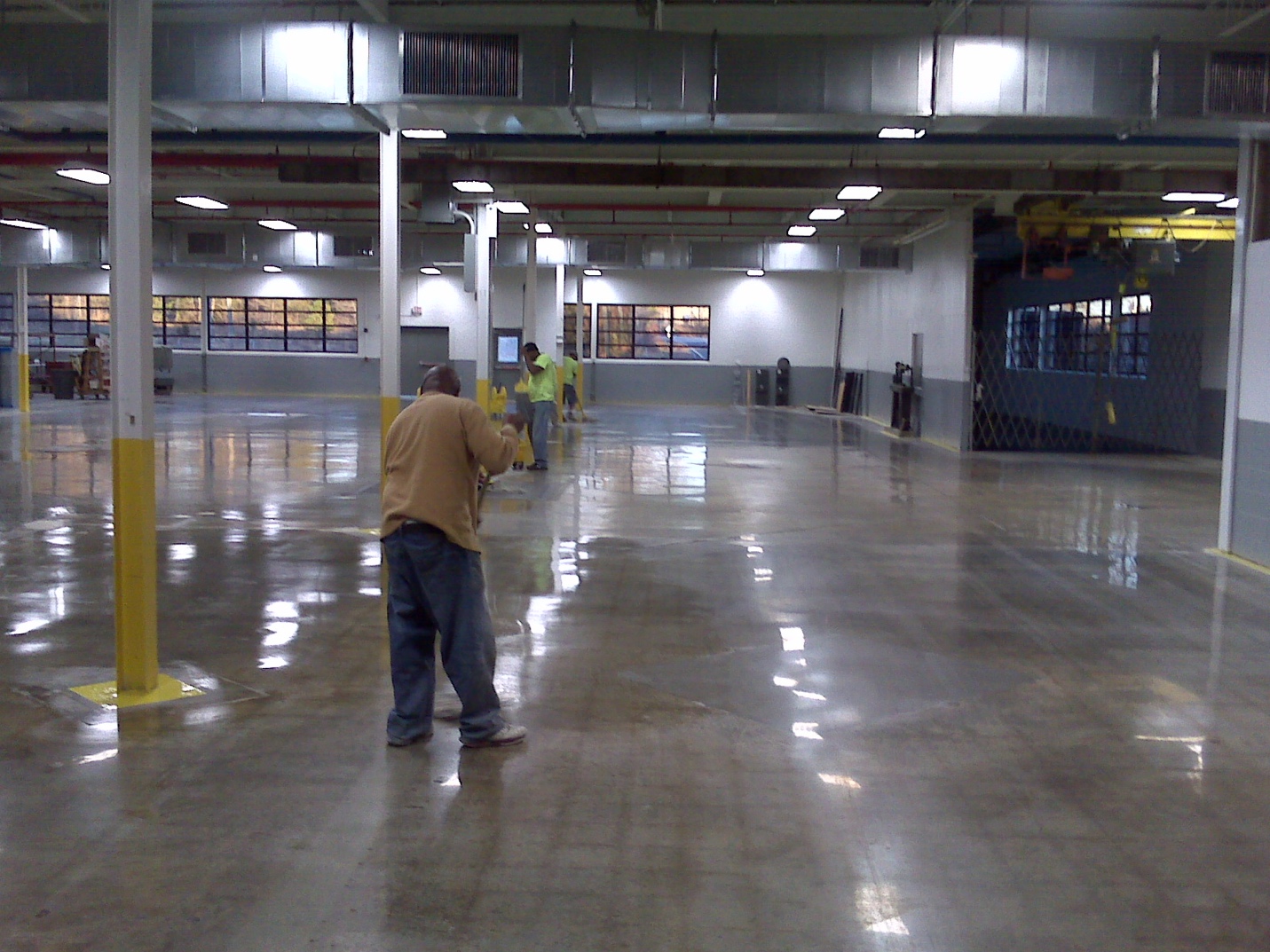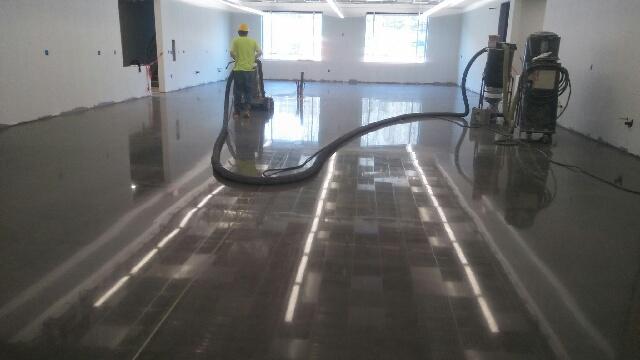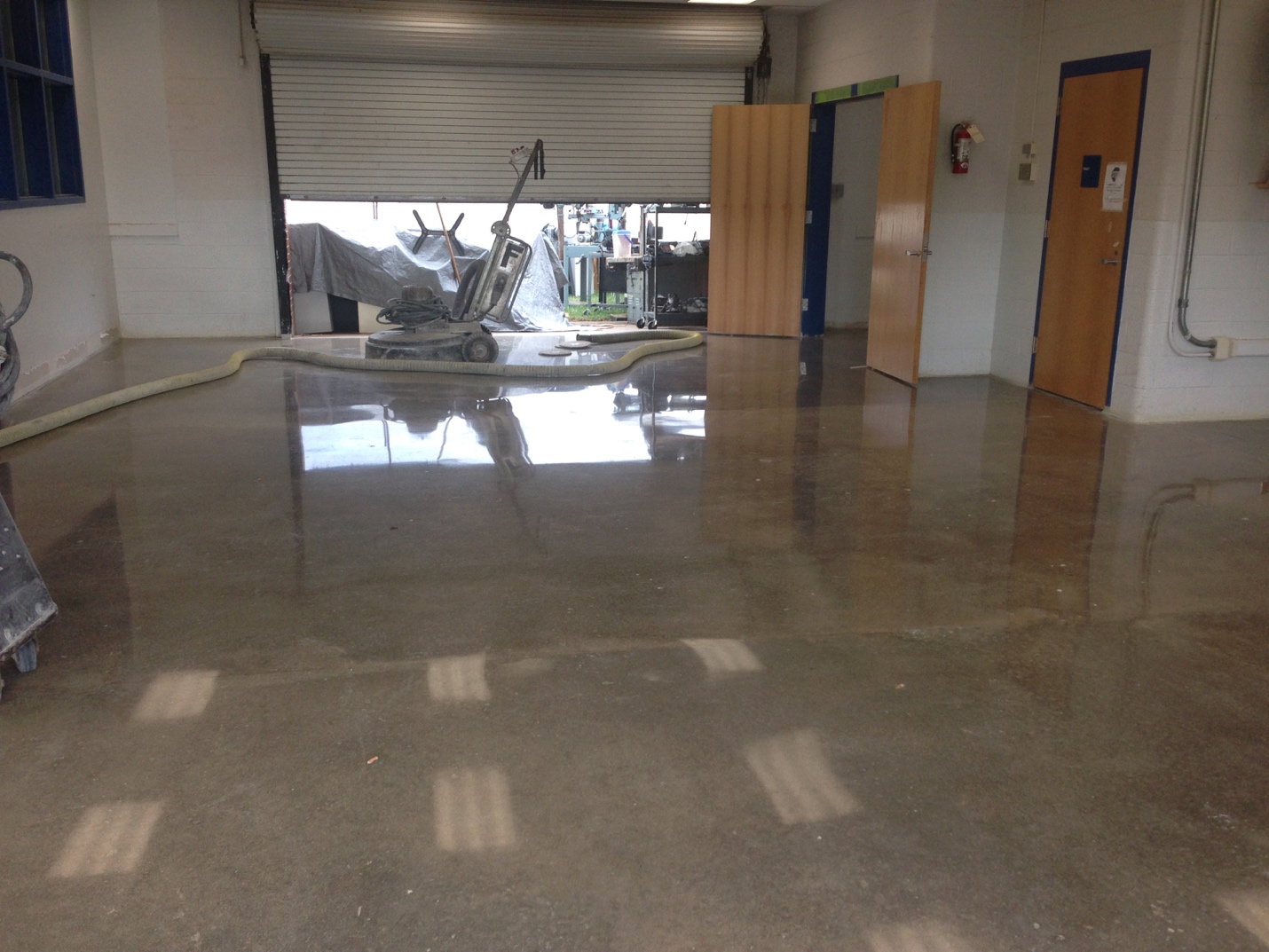Industrial Floor Services
The Shine and Feel of a Marble Floor
Polished Concrete floors offer industrial clients many benefits, including, energy savings, low-maintenance cost, enhanced floor protection, and a cleaner and safer work environment.
In addition to these benefits, a Polished Concrete floor provides industrial customers, a cost-effective option that will typically yield the lowest possible life cycle cost.
Improved Reflectivity and Ambient Lighting:
The reflective property of a Polished Concrete floor increases the lighting in facilities. By selecting a 1500-grit or 3000-grit high gloss finish, ambient lighting can be increased 20-30% helping to reduce the facility energy cost.
Less Maintenance:
A Polished Concrete floor provides a tightly compacted, mechanically refined surface, which helps to minimize hot tire pick-up marks from mobile equipment and helps to reducing staining.
As part of the polishing process, control joints are sawn and filled flush with a semi-pliable joint filler. This protects the walls of the control joints and helps to prevent spalling. Having a flush joint condition also protects product being transported by mobile equipment as impact/vibration is greatly reduced.
Improved floor condition/strength:
For existing concrete floors that have not been polished, surfaces stress and delamination can occur, control joints spall out and contaminants collect at the surface. Mechanically grinding the floor will remove the top surface of the old concrete and polishing will then strengthen it, increasing its impact strength by ~400% and abrasion resistance by ~40%.
For a new slab, the mechanical refinement that polishing creates will provide the enhanced strength from day-one, helping to protect the floor and minimizing long term maintenance costs.
Elimination of Dusting from Efflorescence:
In ordinary unpolished concrete, tiny particles of dust are pushed to the surface through an upward force called hydrostatic pressure, resulting in efflorescence. Efflorescence leads to dusting, which increases the cost of keeping a facility clean.
A safe and easy to clean floor:
A Polished Concrete floor typically exceeds OHSA standards for slip resistance (ASTM C 1028). The dynamic co-efficient of friction ranges from ~0.50 to 0.58 on a Polished Concrete floor and is less slippery as compared to unpolished concrete.
Cleaning a Polished Concrete floor:
It is as simple as damp mopping or using an auto-scrubber with a medium bristle brush. PH neutral detergents can also be used for a more through cleaning. Since no waxes or other chemicals are required, a Polished Concrete floor is simple and economical to keep clean.








